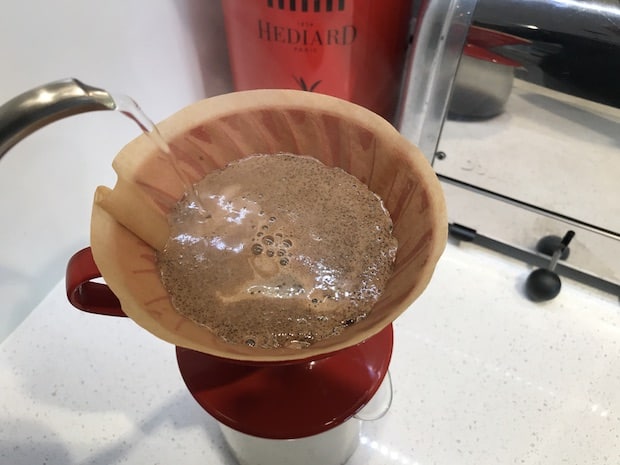Just so you know, as an Amazon Associate we earn from qualifying purchases made via bold red links, buttons or images.
Last Updated on December 13, 2023
Can coffee be meditation? This may seem like a contradiction, but moving meditation involves bringing mindfulness and intention to everyday tasks, allowing us to be fully present and express gratitude for all that we have.
Enjoying your favorite hot coffee each morning probably seems like a given—something you take for granted and rely on to jump start your day. Some of us press a button and in moments we’re rewarded with a steaming cup of joe.
What if we chose to bring intention back into our morning routine, swapping out our electric coffee makers for a more visceral and connected brewing process?
Pour-over coffee
Pour-over coffee offers a hands-on approach, transforming our daily routine into more of a ritual. Not only does this manual process bring us into the present moment, awakening us even before the caffeine, it also provides some of the most delicious coffee possible.
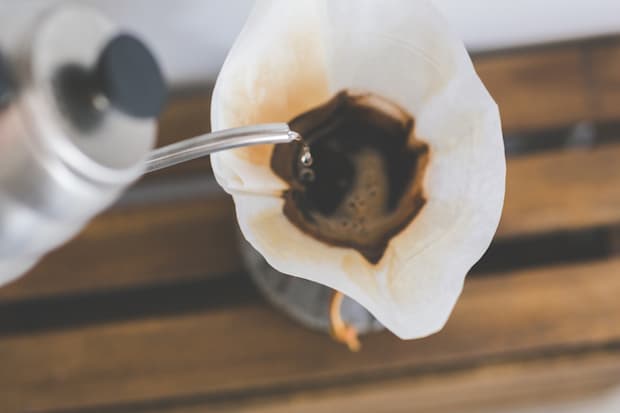
Pour-over coffee isn’t new. It was the original drip coffee method, and we’re now seeing a resurgence. The third wave of coffee around the globe reignited a slower and more intentional approach to brewing coffee, foregoing the hands-off simplicity of the electric drip coffee brewer, in favor of the more complex yet rewarding experience of the pour-over.
Pour-over may seem like yet another unnecessarily complicated hipster trend, but it’s actually—as many hipsters trends tend to be—a return to the simplicity of the past, when human prowess was relied on far more than technology.
Although both pour-over and drip coffee are drip brewing methods that use hot water and gravity to brew a strong yet approachable cup of coffee, there are several key differences in the methods and the final product. If you’ve ever wondered about the difference between pour-over and drip coffee, and why one might be tempted to toss the Mr. Coffee and take a more intentional approach to brewing, read on to discover which method might suit your palate and your daily routine.
A brief history of drip coffee
Evolution is rarely linear. In a pre-globalized world, techniques and technologies were developed oceans apart and shared only at the speed of trade. For the first several centuries of coffee consumption, some form of decoction (soaking coffee grinds in water) was used—often in large pots requiring hours if not days to brew.
The use of smaller pots such as in the Ibrik method (similar to Turkish coffee) reduced brew time down to minutes, making it more reasonable to brew fresh coffee every day. Until the turn of the 20th century, coffee was still found mostly in cafes or coffee carts, until the invention of the percolator and the stovetop espresso machine made it simple and affordable to make at home.
In 1908, Melitta Bentz got tired of coffee grinds floating in her cup and used a sheet of her son’s notepaper to filter them. The paper coffee filter was born, leading the way for the drip coffee revolution. Metal and fabric filters had been used in the past, but they tended to impart unwanted flavors into the coffee. The paper filter fixed this, creating a clean and clear cup of coffee that many found superior to the muddied and grind-filled brews of the past.
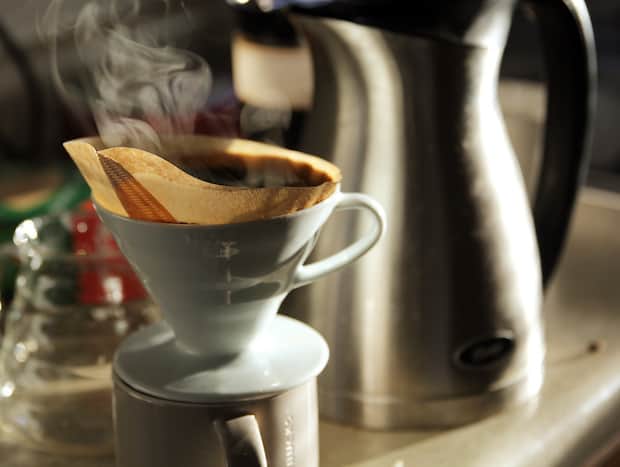
Pour-over drip coffee became increasingly popular for home brewing, with Melitta as the leading supplier of paper filters and pour-over equipment, which they continue to produce today.
The invention of the automatic drip coffee machine brought coffee drinkers more ease and convenience than they’d ever had before. At the touch of a button you could have hot, fresh, grind-free coffee. It was the same every time and all you had to do was add the ground coffee and fill the reservoir with water.
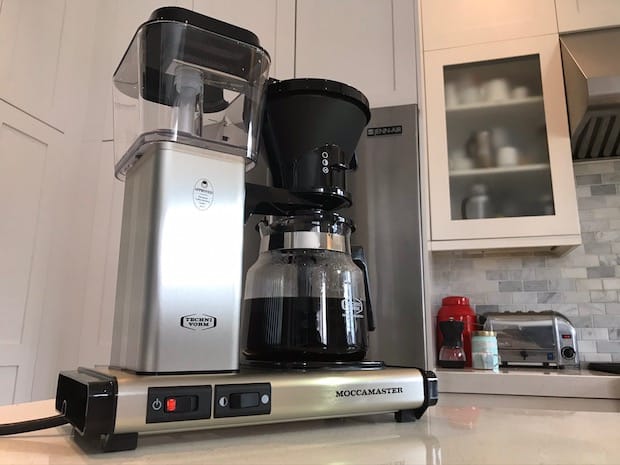
In a matter of years, most homes and offices would have automatic drip machines that were on the go all day long. It’s only with the third wave of artisanal coffee, and a return to intentional hand-crafted beverages, that we’ve seen the reemergence of pour-over style coffee in cafes and at home. But is it really worth the extra fuss?
How pour-over coffee differs from automatic drip coffee
The pour-over method differs from automatic drip in several ways:
- it offers a more complex and nuanced flavor profile
- it allows you to control every step of the process
- it’s more sustainable
On the flip side, it’s less repeatable and takes a level of skill and attention that might stretch beyond what your morning can handle.
This is where the idea of coffee as meditation comes in. There’s an opportunity to make your morning coffee routine into more of a ritual. An intentional and mindful start to your day.
If you’ve got hectic mornings, and the simple (often pre-programmable) automatic drip machine eases your stress and helps get your family out the door on time, it’s probably the best method for you—at least on weekdays.
If you’ve got the time and the interest, however, pour-over brewing can bring a grounded intimacy to your coffee brewing experience that has the potential to start your day with the mindful gratitude so many of us are searching for.
Let’s take a closer look at the pour-over brewing process and how it differs from an electric drip coffee maker.
Coffee flavor
The flavor of your coffee is arguably the most important aspect (after the sweet lift of caffeine, that is!) If coffee didn’t taste delicious we would just take caffeine pills and be done with it.
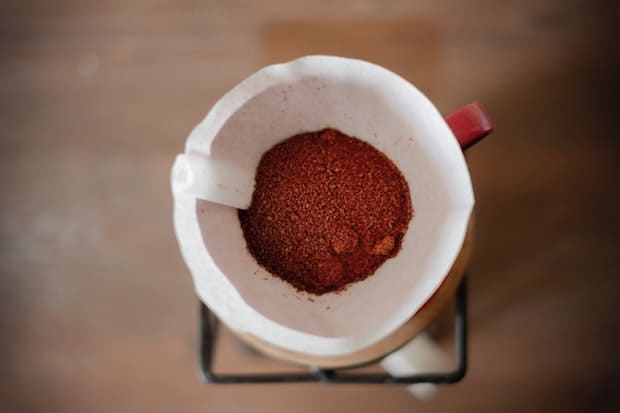
The flavors and aromas you extract from your coffee grounds will differ greatly depending on your process. An automatic drip machine offers a decent cup of coffee, particularly if you use quality beans and the proper grind size. If you perfect your pour-over method, however, you’ll be able to pull out distinct layers of flavor, that tell the story of your beans’ origin. The coffee connoisseur often prefers the pour-over method for this precise reason: the ability to extract the complex and nuanced flavors from quality single-origin beans.
Control over the brewing process
You are able to extract more clarity of flavor and nuanced characteristics from a pour-over method because of the control it offers over every step of the process. You control the exact water temperature. We suggest a gooseneck water kettle with a built-in thermometer, to avoid scalding your grounds. You don’t absolutely need a gooseneck kettle for pour-over coffee, but it’ll help you control the water flow, saturation level, and timing of your brew process. Most importantly, you’ll make better coffee with one.
Much like the pre-infusion stage when brewing espresso, pour-over allows you to saturate your grinds in several steps, the most important of which is the first pour, often called “the bloom.” Lightly saturating your coffee grounds with hot water and allowing them to “bloom” releases carbon dioxide that has built up during roasting. This leads to a more even extraction (carbon dioxide repels water), captures more of the desired flavors, and releases the less desirable bitter characteristics.
This control is really what sets pour-over apart, but also where things can go wrong. It takes time, practice, and attention to get the cup of coffee you’re searching for, and it will take some trial and error to get things just right. With patience, this process can be a great opportunity to reconnect with the art of doing, and to bring mindfulness back into your morning.
Check out this Blue Bottle Coffee demonstration for a thoughtful and repeatable step by step guide to the pour-over process:
Sustainability
Not only is pour-over the ideal way to extract the most complexity and nuance from your beans, it’s also one of the most sustainable brewing methods. You can use a reusable filter or filterless dripper to further reduce waste.
Automatic drip machines consume a lot of energy, particularly when left on to keep coffee warm, and many of us are in the habit of brewing full pots even when they won’t be completely consumed.
Pour-over equipment is also built to last. The simplicity of dripper design means they’re easy to clean and will last a lifetime if cared for properly. Auto drip coffee makers can be difficult to clean properly, and they’re known to chip, break, and stop working over time—particularly lower end, budget machines. Electronics can be difficult to recycle in some areas, and many end up in landfills.
Which method is for you?
If you’re someone who wants ease and convenience and you’re happy with the performance of your coffee beans, you’ll probably want to stick with the tried-and-true automatic drip method— particularly if you like to hit that pot up for several cups of coffee throughout the day.
If you’re looking to upgrade your home coffee experience, bring a level of both attention and intention back into your brewing method, and extract the utmost from your favorite coffee, you might want to give the pour-over method a try.
You can splurge on some fancy coffee equipment if you like, but a simple coffee dripper that sits atop your mug does the trick as well.
If you’re using high-quality coffee beans, the correct grind size, and proper ratio of coffee to water, any brew method should offer you a tasty cup of coffee, but giving pour-over a try might just up your coffee game to a whole new level.

